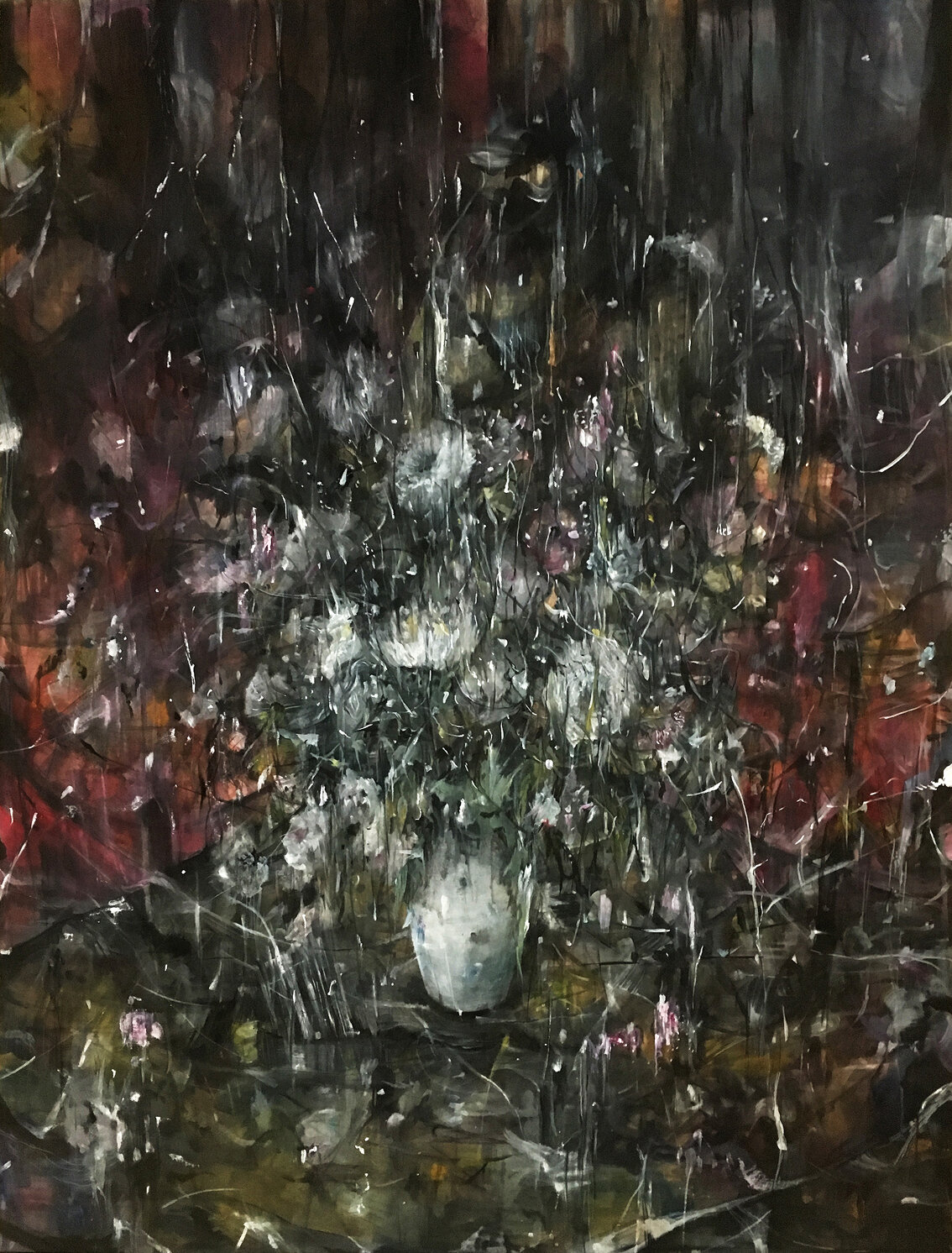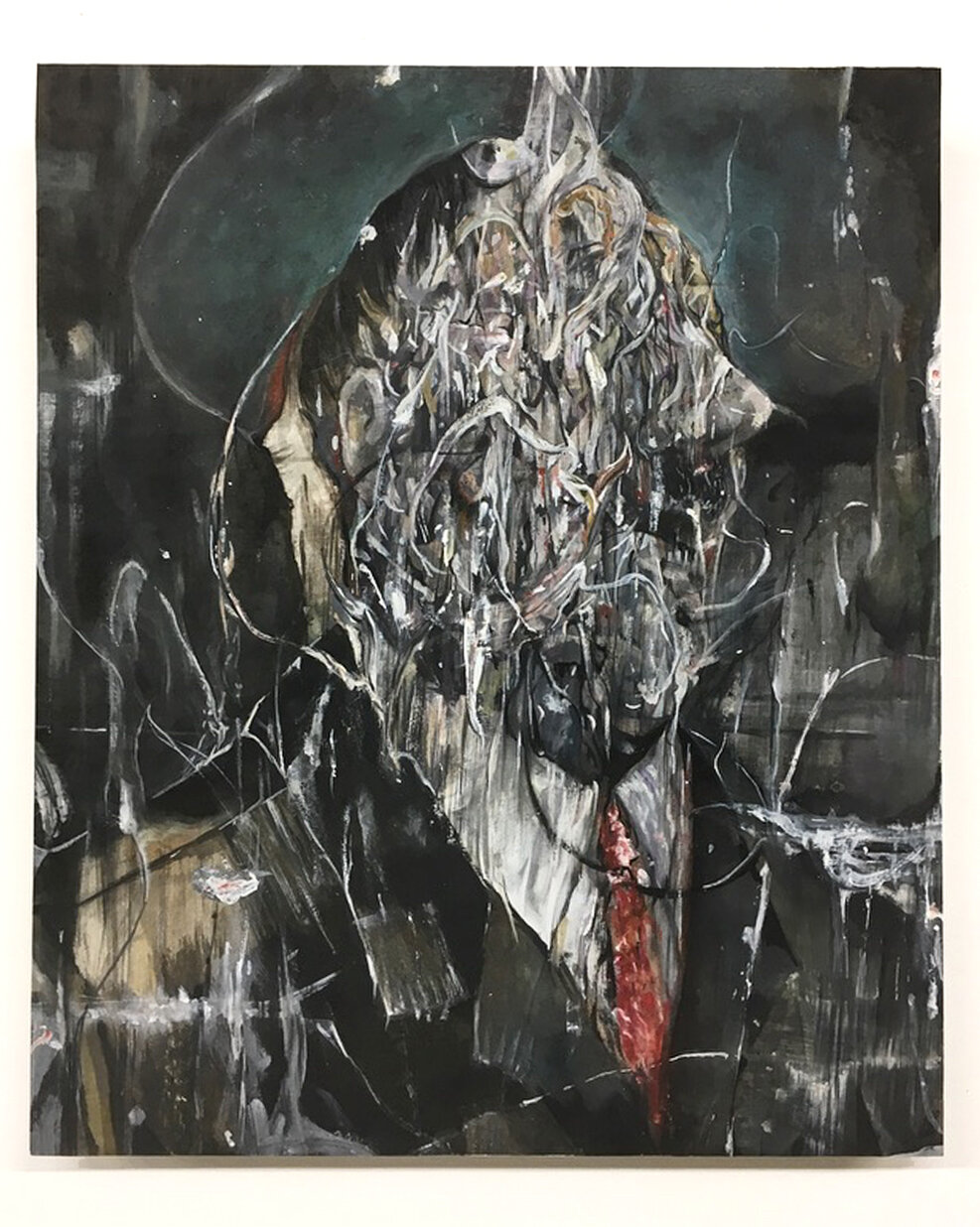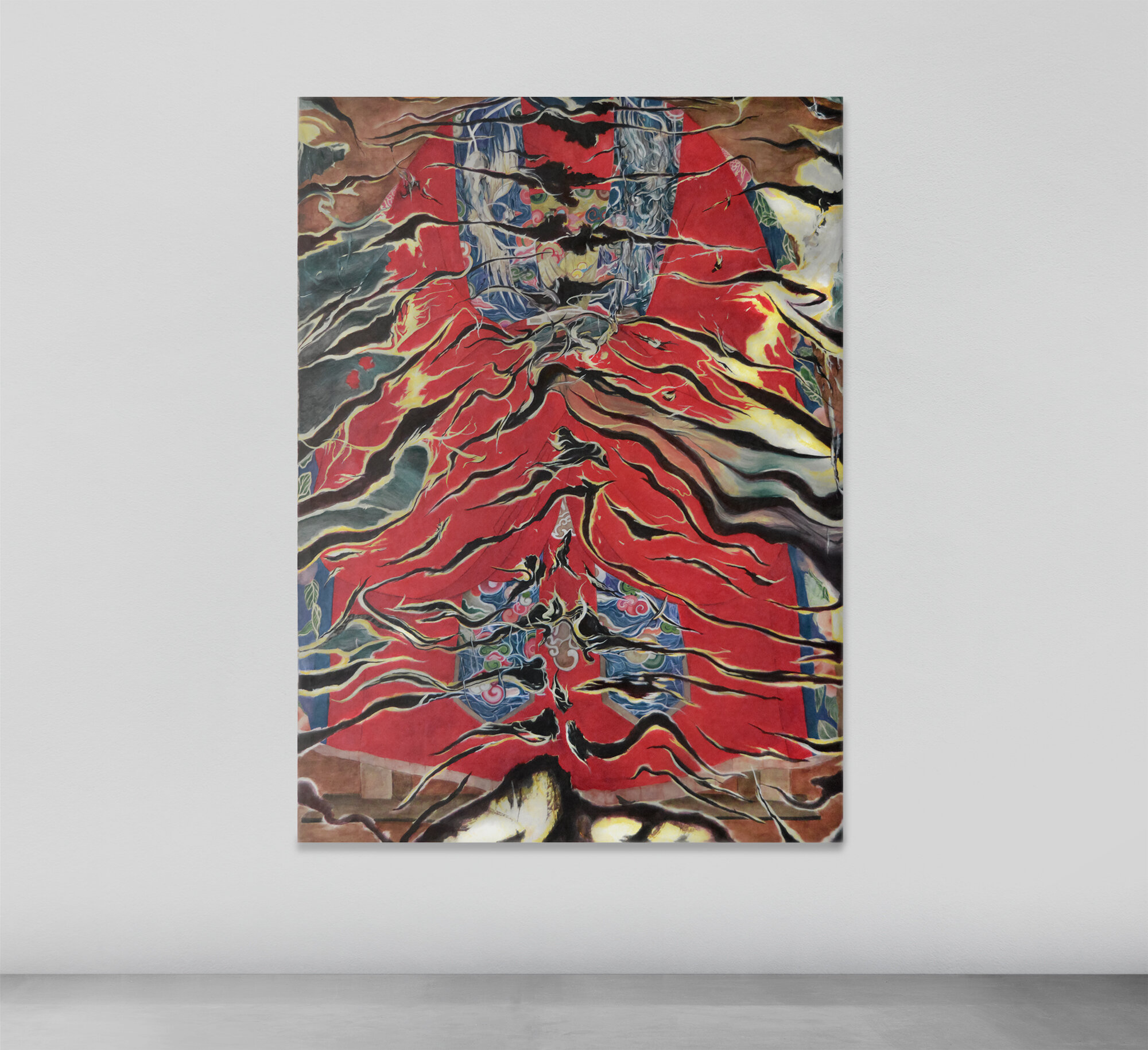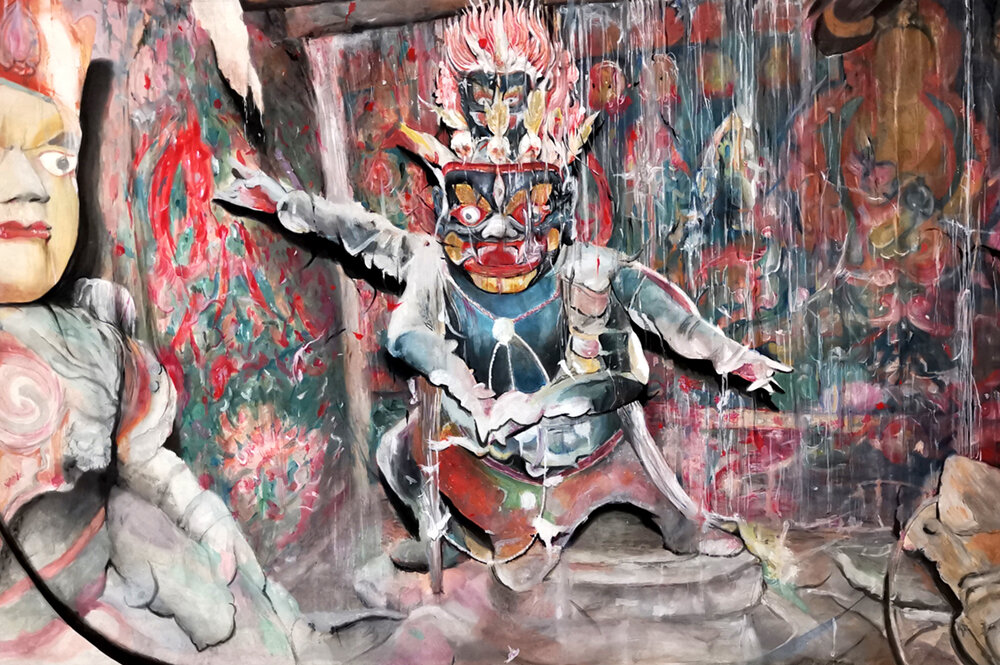Timothy Hon Hung Lee
Lee (1983) has developed a unique approach to Asian Ink painting, one which is informed by traditional methods, whilst simultaneously attempts to transcend its philosophical, cultural, and historical ties.
His work is driven by the tensions that arise from the intersection between the spiritual, secular, and religious approaches to meaning-making in painting.
How do we to repurpose or disavow the tools inherited from our history to live in harmony with an ever-changing scientific and secular age…?
Lee graduated with a Bachelor of Fine Arts in Painting in Leeds University and currently undertaking his Masters of Fine Arts at Goldsmiths University London. Tim is also an alumni of the Florence Trust residency.
Could you tell us a little more about your background, and how did you begin creating art?
I’m a British-born Chinese artist and as far as I can recall, art has been inseparable from my identity. My parents ran a takeaway business and worked long hours, I used to draw and paint as a form of entertainment, and that’s the career I’ve pursued ever since. Hakkanese was spoken at home and growing up with two languages no-doubt influenced how I perceived the world and the way I organize my thoughts. It became clear that there’s a duality to many things. With painting for example, do I follow a western manner of representation or an eastern approach - where the negative space is activated? Or a conflation of the two? These types of questions started young and they still ring true to the work today. In my adult life, I have a background in being an antique handler, an artist’s assistant, a gallery technician and currently, I’m studying for my MFA at Goldsmiths University. For better or worse these roles have influenced my practice - they have opened my eyes to the importance of craftsmanship and artistic integrity.
What does your art aim to say to the viewers?
It’s more interesting to think about what my art wants to hear from the audience. I’m not saying 'look at this' and 'look at what I can do' I’d much prefer the viewer to consider the totality of the work. In my opinion, a great work of art moves you; it doesn’t preach.
Can you tell us about the process of creating your work? What is your daily routine when working?
My paintings are derived from secondary images, they can range from a portrait of an influential figure to an artifact taken from a museum collection. There isn’t any real logic to which images are more interesting than others, other than I’m looking at what is in front of me, and considering what they can become. I am visually probing for a potential opening - that gives space for me to do my thing. Sometimes I’ll manipulate the photos digitally - to find another possibility within the image, but the most important decisions are made during the painting. My work isn’t complete until I’ve found a fitting title, this allows me another entry point to alter the overall tone of the piece. There are other more technical steps, including mounting rice paper and building the support panels, these methods allow me to engage with a range of skills and I try not to allow my routine to become predictable.
What’s the essential element in your art?
I’ll only ever make work that feels vital to me. I may not fully understand the reason or rationale behind each piece, but there is a sense of urgency to create them and I trust in that drive. It’s about embodying a Zen-like approach to each element, where I disregard certain expectations or norms. My art consists of primary materials, water, ink, and paper, and when used together they become more than the sum of their parts. It’s amazing that from these simple tools and applications - lies the potential to address complex and paradoxical themes. My goal is to shed what is unnecessary and to pin down what I believe to be essential.
In your opinion, what role does the artist have in society?
I see the artist as the result of the society around them. Traditions and customs influence how we perceive our environment, and therefore you can only respond to what resources are discoverable to you. It also depends on the type of art you make and whether you want to fit into a specific genre. It’s a question of how active or passive a responsibility the artist charges their work with. In my ideal world, the artist's role and society are interlinked. A healthy open culture ought to support their artists, giving them space to flourish, whereby they become a symbol of their surroundings - reflecting its values and speaking truth to power.
Website: www.timhhlee.com








